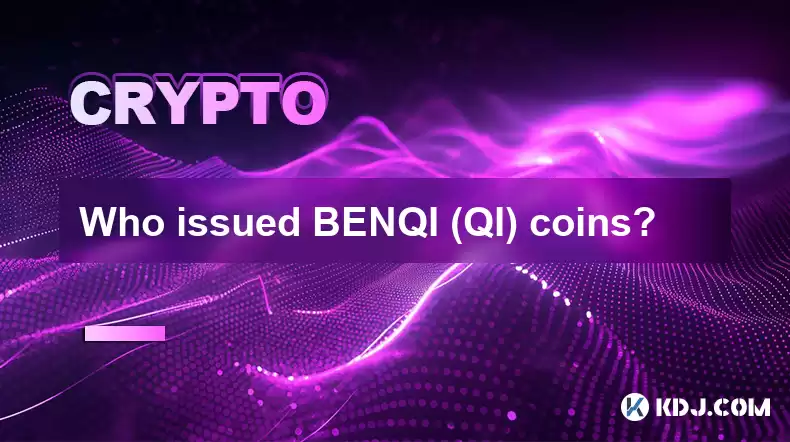-
 Bitcoin
Bitcoin $117900
-2.85% -
 Ethereum
Ethereum $4559
-2.84% -
 XRP
XRP $3.068
-5.67% -
 Tether USDt
Tether USDt $1.000
0.02% -
 BNB
BNB $836.7
-0.81% -
 Solana
Solana $193.2
-2.38% -
 USDC
USDC $0.9998
0.00% -
 TRON
TRON $0.3591
-0.32% -
 Dogecoin
Dogecoin $0.2238
-7.20% -
 Cardano
Cardano $0.9090
4.71% -
 Chainlink
Chainlink $22.55
-4.36% -
 Hyperliquid
Hyperliquid $44.78
-2.41% -
 Sui
Sui $3.771
-4.47% -
 Stellar
Stellar $0.4199
-6.18% -
 Bitcoin Cash
Bitcoin Cash $587.8
-5.02% -
 Ethena USDe
Ethena USDe $1.001
-0.01% -
 Hedera
Hedera $0.2493
-5.06% -
 Avalanche
Avalanche $23.66
-5.54% -
 Litecoin
Litecoin $121.0
-6.80% -
 Toncoin
Toncoin $3.383
-2.39% -
 UNUS SED LEO
UNUS SED LEO $9.287
0.47% -
 Shiba Inu
Shiba Inu $0.00001286
-6.48% -
 Uniswap
Uniswap $10.94
-9.06% -
 Polkadot
Polkadot $3.979
-5.53% -
 OKB
OKB $96.24
-3.88% -
 Dai
Dai $0.9997
0.00% -
 Bitget Token
Bitget Token $4.570
-4.16% -
 Cronos
Cronos $0.1510
-8.87% -
 Ethena
Ethena $0.7251
-6.96% -
 Aave
Aave $310.8
-4.73%
Who issued BENQI (QI) coins?
The BENQI protocol was launched by a group of developers dedicated to promoting DeFi and empowering users with financial freedom.
Dec 22, 2024 at 04:41 am

Who Issued BENQI (QI) Coins?
Key Points:
- Origin of BENQI
- Decentralized Autonomous Organization (DAO) Governance
- Initial Coin Offering (ICO) Details
- Role of the QI Token
- Community Involvement and Token Distribution
Origin of BENQI
BENQI is a decentralized lending protocol on the Avalanche blockchain, created in 2021 to provide users with flexible lending and borrowing options. It was launched by a team of developers passionate about DeFi and empowering users with financial autonomy.
Decentralized Autonomous Organization (DAO) Governance
BENQI is governed by a decentralized autonomous organization (DAO), which ensures its operations are transparent and controlled by the community. QI token holders participate in decision-making through voting on protocol upgrades, parameters, and governance proposals.
Initial Coin Offering (ICO) Details
BENQI conducted an initial coin offering (ICO) in February 2021, raising over $6 million in funding. The ICO offered QI tokens to participants, which represented the protocol's governance and utility token.
Role of the QI Token
The QI token plays a crucial role in the BENQI protocol:
- Governance: QI holders can vote on protocol upgrades and proposals, influencing the direction of BENQI's development.
- Rewards: QI tokens are used to reward liquidity providers and participants in the BENQI ecosystem through yield farming and staking programs.
- Utility: QI tokens can be used as collateral on the BENQI lending platform and as a medium of exchange within the BENQI DAO.
Community Involvement and Token Distribution
BENQI has a strong community involvement, with QI token holders playing a key role in shaping its governance and development. The initial token distribution was designed to incentivize early adopters, liquidity providers, and active community members:
- 40%: Distributed to the community through the ICO and liquidity mining programs.
- 30%: Allocated to the BENQI team and advisors.
- 20%: Reserved for future protocol development and growth initiatives.
- 10%: Held in strategic reserve for stability and liquidity management.
FAQs
1. Who founded BENQI?
BENQI was created by a team of developers, including Chandresh Aharwar, who currently serves as the project's CEO.
2. What is the purpose of BENQI?
BENQI provides a decentralized lending and borrowing platform, allowing users to lend, borrow, and earn interest on crypto assets on the Avalanche blockchain.
3. How do I obtain QI tokens?
QI tokens can be purchased on cryptocurrency exchanges or earned through liquidity mining and staking programs on the BENQI platform.
4. Can QI tokens be staked?
Yes, QI tokens can be staked to earn rewards, participate in governance, and support the stability of the BENQI protocol.
5. Is BENQI regulated?
BENQI, as a decentralized protocol, is not subject to direct government regulation. However, it operates under the open-source principles of the cryptocurrency industry and is subject to community governance and oversight.
Disclaimer:info@kdj.com
The information provided is not trading advice. kdj.com does not assume any responsibility for any investments made based on the information provided in this article. Cryptocurrencies are highly volatile and it is highly recommended that you invest with caution after thorough research!
If you believe that the content used on this website infringes your copyright, please contact us immediately (info@kdj.com) and we will delete it promptly.
- Kazakhstan's Crypto Leap: Bitcoin ETF and Central Asia's Digital Finance Future
- 2025-08-13 12:45:19
- BlockDAG Presale Blazes Past $371M: Fundraising Frenzy Fuels Crypto Sensation
- 2025-08-13 13:05:21
- Meme Coins: Chasing the 2025 Surge – Which Will Moonshot?
- 2025-08-13 10:25:23
- Bitcoin's Wild Ride: Rally, Pullback, and What's Next
- 2025-08-13 10:25:23
- Bitcoin, Bitmax, and Institutional Demand: A New Era of Crypto Investment
- 2025-08-13 10:45:12
- Solana, ROAM, and Airdrops: What's the Buzz in 2025?
- 2025-08-13 11:35:13
Related knowledge

How to purchase Aragon (ANT)?
Aug 09,2025 at 11:56pm
Understanding Aragon (ANT) and Its PurposeAragon (ANT) is a decentralized governance token that powers the Aragon Network, a platform built on the Eth...

Where to trade Band Protocol (BAND)?
Aug 10,2025 at 11:36pm
Understanding the Role of Private Keys in Cryptocurrency WalletsIn the world of cryptocurrency, a private key is one of the most critical components o...

What is the most secure way to buy Ocean Protocol (OCEAN)?
Aug 10,2025 at 01:01pm
Understanding Ocean Protocol (OCEAN) and Its EcosystemOcean Protocol (OCEAN) is a decentralized data exchange platform built on blockchain technology,...

How to invest in Kyber Network Crystal v2 (KNC)?
Aug 12,2025 at 05:21pm
Understanding Kyber Network Crystal v2 (KNC)Kyber Network is a decentralized liquidity hub built on the Ethereum blockchain that enables instant token...

Where can I buy UMA (UMA)?
Aug 07,2025 at 06:42pm
Understanding UMA and Its Role in Decentralized FinanceUMA (Universal Market Access) is an Ethereum-based decentralized finance (DeFi) protocol design...

How to sell my Ren (REN) tokens?
Aug 13,2025 at 11:35am
Understanding REN Tokens and Their Role in Decentralized FinanceREN is an ERC-20 token that powers the Ren protocol, a decentralized interoperability ...

How to purchase Aragon (ANT)?
Aug 09,2025 at 11:56pm
Understanding Aragon (ANT) and Its PurposeAragon (ANT) is a decentralized governance token that powers the Aragon Network, a platform built on the Eth...

Where to trade Band Protocol (BAND)?
Aug 10,2025 at 11:36pm
Understanding the Role of Private Keys in Cryptocurrency WalletsIn the world of cryptocurrency, a private key is one of the most critical components o...

What is the most secure way to buy Ocean Protocol (OCEAN)?
Aug 10,2025 at 01:01pm
Understanding Ocean Protocol (OCEAN) and Its EcosystemOcean Protocol (OCEAN) is a decentralized data exchange platform built on blockchain technology,...

How to invest in Kyber Network Crystal v2 (KNC)?
Aug 12,2025 at 05:21pm
Understanding Kyber Network Crystal v2 (KNC)Kyber Network is a decentralized liquidity hub built on the Ethereum blockchain that enables instant token...

Where can I buy UMA (UMA)?
Aug 07,2025 at 06:42pm
Understanding UMA and Its Role in Decentralized FinanceUMA (Universal Market Access) is an Ethereum-based decentralized finance (DeFi) protocol design...

How to sell my Ren (REN) tokens?
Aug 13,2025 at 11:35am
Understanding REN Tokens and Their Role in Decentralized FinanceREN is an ERC-20 token that powers the Ren protocol, a decentralized interoperability ...
See all articles

























































































